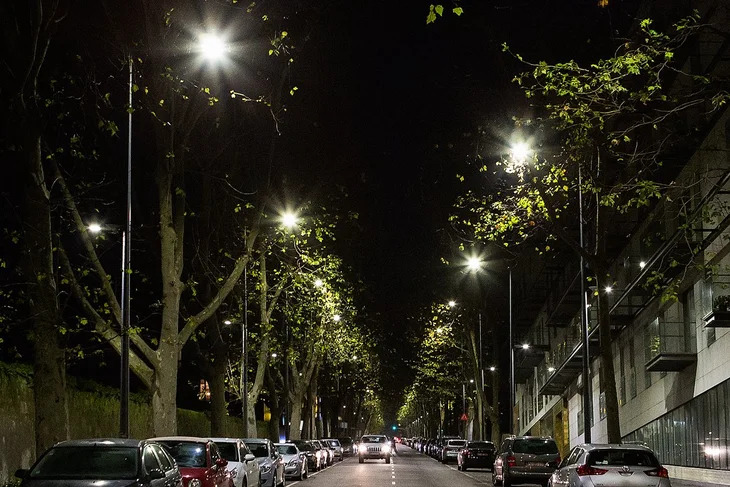
Public lighting is 30,000 times more sustainable
05/04/2024
There’s a whole new sustainability lighting up Porto’s streets – environmental, but also economic – with the completion of the installation of 30,000 LED lamps throughout the city. Thanks to a seven million euros investment, the municipality will be able to save 2.3 million euros on its electricity bill every year. Having completed the operation, work is already underway on the remote management of the luminaires.
The operation to replace the old luminaires, which started at the end of 2022, was, according to the Deputy Mayor, ‘a lengthy public procurement process’. When the public tender was launched in 2019, there were only 6,000 LED luminaires in the city.
In an interview with Jornal de Notícias, Filipe Araújo emphasised that ‘60% of a municipality’s public spending on electricity comes from public lighting’, but Porto will ‘recoup the money invested in three years’.
Most of the around 23,000 lamps have been replaced over the past year, with the most recent changes visible around Campanhã railway station and on Rua da Constituição. Coverage using LED technology is thus close to 100%.
In August last year, the66 lamps on the Luis I Bridge were replaced, which has already prevented the emission of 60 tonnes of carbon dioxide. This infrastructure is already equipped with a remote management system, which makes it possible to regulate light intensity remotely, thus also helping to save energy.
The Head of Environment and Climate Transition also emphasises that ‘the city has chosen to follow an innovative path in the sustainability of its energy structure, setting an example in this area. From Boavista to Pasteleira, passing through the city’s most emblematic areas such as Campanhã, Foz and the Historic Centre, Porto is now mostly lit by LED technology, which is more efficient and less polluting’.
The work included a street lighting masterplan, drawn up by the Porto Energy Agency, to define the level of luminosity, intensity and light temperatures for each location, depending on its use.
‘If it’s a more residential area, it should have a warmer colour temperature [yellow], if it’s a more industrial area, it should have a cooler temperature [white]’, the Deputy Mayor explains, stressing the importance of rules to reduce light pollution. ‘This is how Porto is working to guarantee quality lighting throughout its territory, always keeping up with the best practices observed in this area at international level’, Filipe Araújo concludes.
Reduction of 4,742 tonnes of carbon dioxide emitted
For Filipe Araújo, the change process had ‘very little impact on mobility’, even though ‘many of these luminaires are on public roads and the replacement involved the circulation of vans with platform lifts’.
At the moment, the only thing left to do is align the details of the road network, especially, the Deputy Mayor says, in areas managed by Infraestruturas de Portugal.
The commitment to LED lighting will contribute to a reduction of 4,742 tonnes of carbon dioxide emitted into the atmosphere. Filipe Araújo recalls that ‘the city mostly uses electricity’ and that decarbonisation of that sector can be done ‘in many different ways: producing more renewable energy or avoiding emissions, using less energy’.
And ‘this is where public lighting comes in’, with a reduction in the energy consumption of the Municipality of Porto by 13 million kWh. ‘The energy we no longer use represents emissions we no longer emit’, he emphasises, pointing out that these are ‘fundamental objectives in the world we live in, and demonstrate clearly the importance of adopting these solutions as a logical evolution for all cities’.
